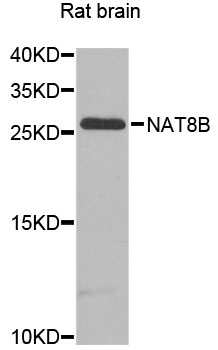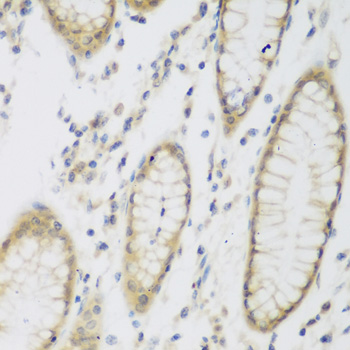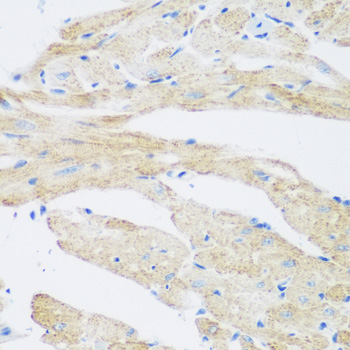-
Product Name
NAT8B Polyclonal Antibody
- Documents
-
Description
Polyclonal antibody to NAT8B
-
Tested applications
WB, IHC
-
Species reactivity
Human, Mouse, Rat
-
Alternative names
NAT8B antibody; CML2 antibody; Hcml2 antibody; NAT8BP antibody; putative N-acetyltransferase 8B antibody
-
Isotype
Rabbit IgG
-
Preparation
Antigen: Recombinant fusion protein containing a sequence corresponding to amino acids 75-165 of human NAT8B (NP_057431.2).
-
Clonality
Polyclonal
-
Formulation
PBS with 0.02% sodium azide, 50% glycerol, pH7.3.
-
Storage instructions
Store at -20℃. Avoid freeze / thaw cycles.
-
Applications
WB 1:500 - 1:2000
IHC 1:50 - 1:200 -
Validations

Western blot - NAT8B Polyclonal Antibody
Western blot analysis of extracts of rat brain, using NAT8B antibody at 1:1000 dilution.Secondary antibody: HRP Goat Anti-Rabbit IgG (H+L) at 1:10000 dilution.Lysates/proteins: 25ug per lane.Blocking buffer: 3% nonfat dry milk in TBST.Detection: ECL Enhanced Kit .Exposure time: 90s.

Immunohistochemistry - NAT8B Polyclonal Antibody
Immunohistochemistry of paraffin-embedded rat kidney using NAT8B antibody at dilution of 1:200 (40x lens).

Immunohistochemistry - NAT8B Polyclonal Antibody
Immunohistochemistry of paraffin-embedded human stomach using NAT8B antibody at dilution of 1:200 (40x lens).

Immunohistochemistry - NAT8B Polyclonal Antibody
Immunohistochemistry of paraffin-embedded mouse heart using NAT8B antibody at dilution of 1:200 (40x lens).
-
Background
May have a lysine N-acetyltransferase activity catalyzing peptidyl-lysine N6-acetylation of various proteins. Thereby, may regulate apoptosis through the acetylation and the regulation of the expression of PROM1. May also regulate amyloid beta-peptide secretion through acetylation of BACE1 and the regulation of its expression in neurons.
Related Products / Services
Please note: All products are "FOR RESEARCH USE ONLY AND ARE NOT INTENDED FOR DIAGNOSTIC OR THERAPEUTIC USE"
